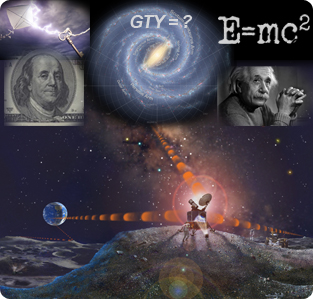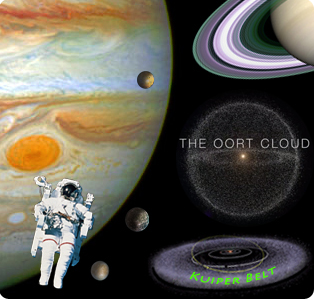Galacticity and the 21st Century
|
MONDAY
|

![]() = All times
= All times
for terrestrial events in local time unless noted.
![]() = All times for international terrestrial events in local time unless noted.
= All times for international terrestrial events in local time unless noted.
![]() = All times for space events, and…
= All times for space events, and…
![]() = All times for international space / astro events in Hawaii Standard Time unless noted. Add 10 hours to obtain UT (‘Universal Time;’ Greenwich, England).
= All times for international space / astro events in Hawaii Standard Time unless noted. Add 10 hours to obtain UT (‘Universal Time;’ Greenwich, England).
Weekly Planet Watch – Evening Planets: Jupiter (E), Uranus (SW), Neptune (WSW); Morning Planets: Venus (SE), Mars (S), Saturn (SE).
Human Jupiter, Saturn, Solar System Complete Mission Design Project: 2013-2021
|
Continued from…
TUESDAY
WEDNESDAY
|
THURSDAY
![]() Jan 21 — British Interplanetary Society, London, United Kingdom: Lecture: Interstellar Flight – An Update on Progress and Developments, and Scenario Analysis for this Century; Canceled.
Jan 21 — British Interplanetary Society, London, United Kingdom: Lecture: Interstellar Flight – An Update on Progress and Developments, and Scenario Analysis for this Century; Canceled.
![]() Jan 21 — Moon: 5.9° S of M35, 08:00.
Jan 21 — Moon: 5.9° S of M35, 08:00.
![]() Jan 21 — Apollo Asteroid 2011 BG24: Near-Earth flyby (0.080 AU).
Jan 21 — Apollo Asteroid 2011 BG24: Near-Earth flyby (0.080 AU).
FRIDAY
![]() Jan 22 — Middle Tennessee Space Society (NSS Chapter), Franklin TN: Middle Tennessee Space Society regular meeting; at Shoney’s restaurant, 18:00 – 21:00.
Jan 22 — Middle Tennessee Space Society (NSS Chapter), Franklin TN: Middle Tennessee Space Society regular meeting; at Shoney’s restaurant, 18:00 – 21:00.
![]() Jan 22 — Moon: 14.6° S of Castor, 17:00; 11.1° S of Pollux, 22:00.
Jan 22 — Moon: 14.6° S of Castor, 17:00; 11.1° S of Pollux, 22:00.
SATURDAY
![]() Jan 23 — Cassini OTM-438, Saturn Orbit: Spacecraft conducts Orbital Trim Maneuver #438 today.
Jan 23 — Cassini OTM-438, Saturn Orbit: Spacecraft conducts Orbital Trim Maneuver #438 today.
![]() Jan 23 — International Lunar Observatory Association, Space Age Publishing Company, Kona HI: Galaxy Forum Hawaii 2016 – Kona: Galaxy Astronomy from the Moon; at Astronaut Ellison S. Onizuka Space Center.
Jan 23 — International Lunar Observatory Association, Space Age Publishing Company, Kona HI: Galaxy Forum Hawaii 2016 – Kona: Galaxy Astronomy from the Moon; at Astronaut Ellison S. Onizuka Space Center.
![]() Jan 23 — Space Center Houston, Houston TX: Independence Plaza grand opening, featuring eight-story-tall multiple-exhibit complex with shuttle replica mounted on top of the first shuttle carrier aircraft.
Jan 23 — Space Center Houston, Houston TX: Independence Plaza grand opening, featuring eight-story-tall multiple-exhibit complex with shuttle replica mounted on top of the first shuttle carrier aircraft.
![]() Jan 23-26 — Institute for Research in Fundamental Sciences (IPM), Tehran, Iran: Tehran Meeting on Modified Gravity.
Jan 23-26 — Institute for Research in Fundamental Sciences (IPM), Tehran, Iran: Tehran Meeting on Modified Gravity.
![]() Jan 23-29 — Committee on Space Research (COSPAR), International Living with a Star (ILWS), Center of Excellence in Space Sciences India (CESSI), Goa, India: Conference: Science for Space Weather.
Jan 23-29 — Committee on Space Research (COSPAR), International Living with a Star (ILWS), Center of Excellence in Space Sciences India (CESSI), Goa, India: Conference: Science for Space Weather.
![]() Jan 23 — Moon: Full (Wolf Moon), 15:46.
Jan 23 — Moon: Full (Wolf Moon), 15:46.
SUNDAY
![]() Jan 24 — Moon: 4.9° S of Beehive Cluster, 00:00.
Jan 24 — Moon: 4.9° S of Beehive Cluster, 00:00.

